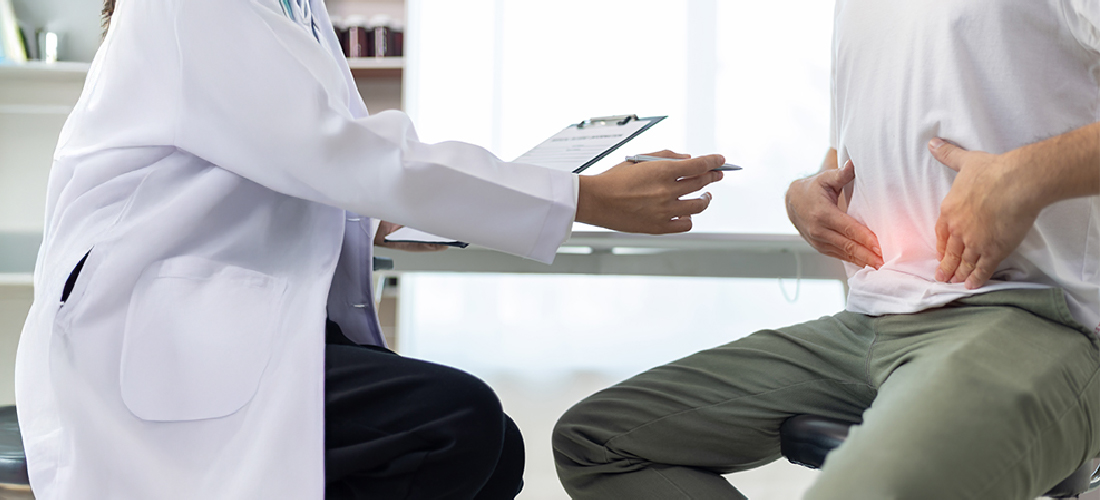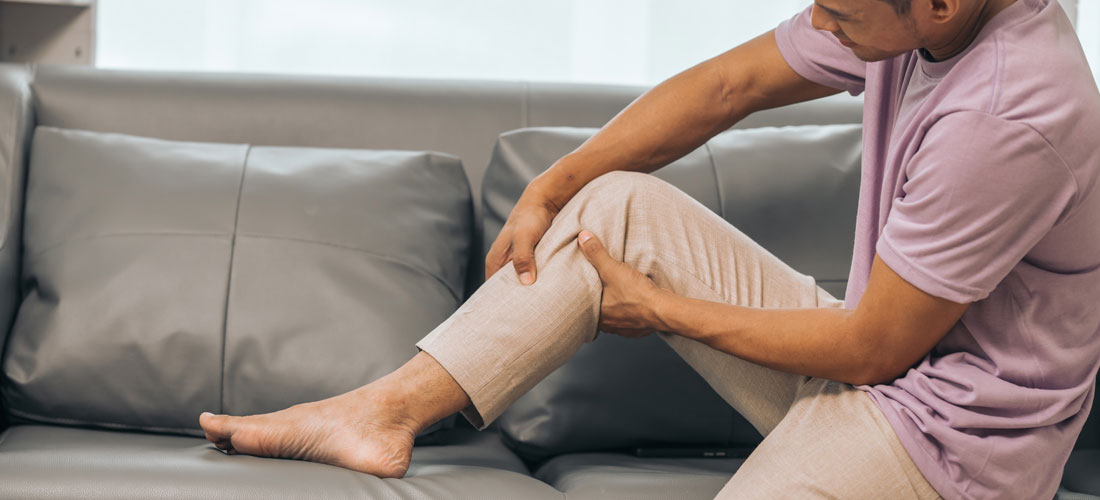Abdominal Aortic Aneurysm (AAA)
The aorta is the largest artery in the body. It begins in the heart’s lower-left chamber and travels upward briefly before curving down through the chest and abdomen, ending near the pelvis. Along the way, it gives rise to several smaller branches that supply oxygen-rich blood to vital organs, muscles, and tissues.
In adults, the aorta measures about one inch in diameter at its widest point, gradually narrowing to around two centimeters by the time it reaches the pelvis. Within the abdominal cavity, the section of the aorta is called the abdominal aorta. This portion delivers blood to the stomach, intestines, kidneys, and lower limbs.
What is an Abdominal Aortic Aneurysm?
An abdominal aortic aneurysm, or AAA, is a bulging or ballooning in the wall of the abdominal aorta. This happens when part of the artery wall weakens and stretches outward. Normally, the aorta’s wall is strong enough to handle the constant pressure of blood flowing from the heart. Over time, factors such as aging, smoking, and certain diseases can weaken that wall. Once it loses strength, the pressure of blood can cause it to expand.
Doctors define an aneurysm as a section of the artery that has widened to at least 50% more than its normal diameter. For the abdominal aorta, this usually means the affected area measures about 3 centimeters or more. The main concern is that as the aneurysm grows, the risk of rupture increases. A rupture causes severe internal bleeding and is life-threatening. Generally, aneurysms larger than 5.0 cm in women and 5.5 cm in men carry a much higher risk of rupture.
Most people with an AAA don’t notice any symptoms until the aneurysm is large or close to rupturing. Because of that, many are discovered by chance during imaging tests for unrelated issues.
A ruptured AAA is a medical emergency. Sudden, severe pain in the abdomen, back, or side, along with dizziness, shortness of breath, or fainting, requires immediate medical attention.
How common are Abdominal Aortic Aneurysms?
AAAs are relatively common, especially in older adults. Studies estimate that about 1.4% of people aged 50 to 84 in the United States have an AAA. The condition is four times more common in men than in women.
Among men over 65, about 1% to 2% develop an aneurysm, and the risk doubles with each additional decade of life. Among women, the rate is lower, but those with a history of smoking are at greater risk.
About three-quarters of all aortic aneurysms occur in the abdomen. They’re more common in people of European descent compared to Black or Asian populations. When AAAs develop in women, they tend to rupture at smaller sizes and can occur more often in families where another relative has had the condition.
In India, exact numbers are limited, but vascular specialists report a growing number of diagnoses, likely due to better imaging access and awareness.
Smoking remains the strongest risk factor in Indian patients as well, especially among older men. Hypertension, diabetes, and high cholesterol—conditions that are increasingly common in India—also contribute to aneurysm formation. While men are more likely to develop AAAs, women are at greater risk of rupture even when aneurysms are smaller.
Common symptoms
Constant or deep pain in the lower back or abdomen
Pain that radiates to the groin, leg, or flank
A pulsing feeling in the abdomen, similar to a heartbeat
If an aneurysm ruptures, symptoms come on suddenly and are severe:
Intense abdominal or back pain
Rapid heartbeat
Low blood pressure or fainting
Sweaty, clammy skin
Nausea and shortness of breath
A rupture is a life-threatening emergency that requires immediate surgery.
Causes
The exact cause of an AAA isn’t always clear, but it begins with a weakening of the artery wall. Several processes can contribute to this.
Atherosclerosis, or plaque buildup, plays a key role. Fatty deposits along the artery wall trigger inflammation and damage, which erode the structural proteins that give the aorta strength. Over time, the wall becomes thinner and more prone to stretching.
Smoking has a direct and harmful effect. Chemicals in tobacco damage the blood vessel lining and degrade elastin and collagen, the proteins that keep arteries resilient. High blood pressure puts additional strain on the weakened wall, making it more likely to bulge outward.
Genetic factors can also influence the integrity of the vessel wall. Some people inherit connective tissue disorders that make their arteries less stable. Even without a specific genetic syndrome, family history alone increases risk.
Risk factors
Several factors increase the likelihood of developing an AAA. The main ones include:
- Smoking history: Smoking is the strongest modifiable risk factor. People who have smoked at any point in life face a much higher risk than those who never have.
- Older age: The risk rises with age, especially after 50 for men and after 65 for women.
- Male sex: Men are more likely to develop aneurysms, though women with AAAs tend to have worse outcomes.
- Family history: Having a parent, sibling, or child with an AAA increases the chance of developing one, particularly among brothers.
Other contributing factors include:
- High blood pressure
- Atherosclerotic cardiovascular disease (such as coronary or peripheral artery disease)
- Genetic conditions affecting connective tissue, like Marfan or Ehlers-Danlos syndrome
- High cholesterol and chronic inflammation
Complications
The most serious complication of an AAA is rupture, which causes internal bleeding. Globally, ruptured AAAs account for up to 200,000 deaths each year. The risk of rupture increases as the aneurysm enlarges. Once rupture occurs, emergency surgery is required, but survival rates are low.
Other complications include blood clot formation inside the aneurysm. These clots can break loose and travel to the legs or other organs, blocking blood flow.
Prevention
There’s currently no guaranteed way to prevent an abdominal aortic aneurysm, but the focus is on reducing risk factors.
If someone in your immediate family has had an AAA, talk to your doctor. They may recommend a screening ultrasound, especially if you’re over 60. This simple test can identify aneurysms before they cause harm.
You can also support vascular health through lifestyle choices:
- Quit smoking: Stopping tobacco use is the single most effective way to lower risk.
- Maintain healthy blood pressure: Work with your doctor to manage hypertension.
- Eat a balanced diet: Choose foods rich in fruits, vegetables, lean protein, and whole grains.
- Exercise regularly: Aim for moderate activity most days of the week, as long as it’s safe for you.
- Manage cholesterol and diabetes: Keeping these conditions under control reduces arterial damage.
- Limit alcohol intake: Excessive alcohol can raise blood pressure and strain the heart.
Diagnosis
Many AAAs are discovered by accident during tests or scans done for unrelated problems. Because small aneurysms rarely cause symptoms, they often go unnoticed until a doctor feels a pulsating mass in the abdomen or sees it on imaging.
A thorough diagnosis involves a physical exam, discussion of medical and family history, and imaging tests such as:
- Abdominal ultrasound: This is the most common and least invasive test. It uses sound waves to create a picture of the aorta and can accurately measure the aneurysm’s size.
- CT scan: A computed tomography scan gives detailed cross-sectional images, helping doctors assess the aneurysm’s exact shape and size.
- MRI: Magnetic resonance imaging offers another detailed view without radiation exposure. In some cases, a contrast agent is used to highlight the blood vessels more clearly.
Screening
Screening recommendations vary slightly, but most experts agree that:
- Men aged 65 to 75 who have ever smoked should have a one-time ultrasound screening.
- Men in the same age range who have never smoked may still be screened if they have a strong family history.
- Women are less likely to be screened unless they have multiple risk factors, including smoking and family history.
If a small aneurysm is found, your doctor may schedule repeat ultrasounds every six to twelve months to monitor its growth.
Treatment options
The main goal of treatment is to prevent rupture. The approach depends on the aneurysm’s size, growth rate, and symptoms.
Medical monitoring (Surveillance)
If the aneurysm is small—less than 5.0 cm in women or 5.5 cm in men—and not causing symptoms, doctors often recommend regular monitoring. This means periodic ultrasounds or CT scans to check if the aneurysm is growing.
During this time, managing overall vascular health is essential. Doctors usually advise quitting smoking, controlling blood pressure, and following a heart-healthy diet. Medications may be prescribed for cholesterol or hypertension. Although these measures don’t shrink the aneurysm, they help slow its progression and protect against other cardiovascular issues.
Surgical repair
Surgery becomes necessary if:
- The aneurysm reaches or exceeds the size threshold for repair.
- It grows rapidly over a short period.
- It causes pain or tenderness.
- It ruptures, which requires immediate surgery.
There are two main types of repair procedures:
1. Endovascular Aneurysm Repair (EVAR):
This minimally invasive procedure involves inserting a thin catheter through an artery in the groin. The surgeon guides a stent graft—a metal mesh tube covered with fabric—to the site of the aneurysm. The graft reinforces the weakened wall and redirects blood flow, reducing pressure on the aneurysm. Most patients recover quickly, with shorter hospital stays and less postoperative pain. Regular imaging follow-up is needed to ensure the graft remains secure.
2. Open Surgical Repair:
This is a more traditional approach. The surgeon makes an incision in the abdomen, removes the damaged portion of the aorta, and replaces it with a synthetic graft sewn into place. Recovery takes longer, but the repair is durable. Open surgery may be a better choice for people whose anatomy doesn’t allow for endovascular repair.
Both procedures have similar long-term survival outcomes. The choice depends on the patient’s overall health, anatomy, and surgical risk.
Prognosis and long-term care
With regular monitoring and timely treatment, many people with AAAs live long, healthy lives. The key is early detection. Once an aneurysm ruptures, survival rates drop sharply, but elective repairs performed before rupture have excellent outcomes.
After surgery, ongoing care includes managing blood pressure, avoiding smoking, and keeping up with scheduled imaging tests. Patients who have had endovascular repair will need lifelong surveillance to make sure the stent graft continues to function properly.
Living with an Abdominal Aortic Aneurysm
Living with an aneurysm can cause anxiety, especially when you’re aware it could grow. Regular follow-up helps maintain peace of mind. It’s important to stick with medical appointments, take prescribed medications, and maintain healthy habits.
Avoid lifting very heavy objects or engaging in activities that cause sudden increases in blood pressure. Most people can continue with daily routines, exercise in moderation, and live fully while under medical supervision.
How Abdominal Aortic Aneurysm is treated at RIVEA Vascular Institute
At RIVEA Vascular Institute, Hyderabad, our team of vascular and endovascular specialists, led by American Board certified vascular surgeon, Dr. Karthik Mikkineni, uses advanced image-guided techniques to treat complex aortic aneurysms with precision.
Endovascular Aneurysm Repair (EVAR)
RIVEA offers EVAR as the preferred option for most patients with suitable anatomy. Using advanced fluoroscopic guidance, the surgeon navigates a catheter through the groin to deploy a stent graft that lines the weakened section of the aorta. This restores safe blood flow and reduces the risk of rupture. Patients typically go home within two to three days and recover quickly.
Fenestrated Endovascular Aneurysm Repair (FEVAR)
For aneurysms close to or involving important branches of the aorta—such as those supplying the kidneys or intestines—RIVEA performs Fenestrated Endovascular Aneurysm Repair (FEVAR). This technique uses a customized stent graft with small openings (fenestrations) that align precisely with branch arteries, maintaining blood flow while securing the aneurysm. FEVAR allows treatment of complex cases that previously required open surgery.
RIVEA’s vascular team follows every patient closely after repair with scheduled imaging and routine consultations to ensure the graft remains stable and effective.
An abdominal aortic aneurysm is a serious but manageable condition. It develops slowly, often without symptoms, and poses the greatest danger when undetected. Regular screening, especially for older men who have smoked, can identify aneurysms before they become life-threatening.
Lifestyle changes—quitting smoking, managing blood pressure, eating well, and exercising—remain essential parts of prevention and care. For larger aneurysms, modern surgical techniques like EVAR have greatly improved outcomes and recovery times.
With awareness, proactive screening, and timely treatment, the risks from an abdominal aortic aneurysm can be significantly reduced.
Why choose RIVEA
RIVEA is the nation’s premier center exclusively focused on vascular, endovascular and interventional radiology treatments. Our vascular specialist, Dr. Karthik Mikkineni is an American Board of Surgery certified vascular surgeon. At RIVEA, your care is led by Dr. Karthik Mikkineni, a U.S.-trained, board-certified vascular surgeon with global experience brought directly to Hyderabad.
What RIVEA offers:
- Board-certified specialist in Integrated Vascular Surgery (American Board of Surgery)
- Over a decade of leadership at Stanford University and Oklahoma City VA
- Hybrid Operating Room powered by GE Healthcare
Click here to learn more about:
Endovascular Aortic Repair (EVAR)
For any inquiries, post your query here:
Ask Rivea
Contact us today to explore your options.
Call Now
FAQs
How do I take care of myself?
If you have an AAA, follow your doctor’s guidance carefully. They’ll tailor recommendations to your specific needs. In general:
- Keep all medical appointments and follow-ups.
- Make gradual, sustainable lifestyle changes.
- Take prescribed medications exactly as directed.
- Ask your doctor if you need antibiotics before dental or medical procedures—sometimes this is needed after aneurysm repair to prevent infection.
When should I see my healthcare provider?
Contact your doctor if you notice new or changing symptoms, side effects from medication, or have questions about your condition.
Your provider will decide how often you need follow-up visits and imaging to check for:
- Aneurysm growth or rupture risk
- Complications after EVAR, such as endoleak (small leaks around the graft)
When should I go to the emergency room?
Go to the nearest emergency department or call your local emergency number if you experience sudden and severe pain in your abdomen, lower back, or side. These can be signs of a rupture and require immediate attention.
What questions should I ask my provider?
You may want to ask:
- Am I at risk for an AAA?
- Should I have a screening?
- What changes can lower my risk?
- How big is my aneurysm?
- Do I need surgery or regular monitoring?
- Which procedure—EVAR or open repair—is right for me?
- What are the risks and benefits of surgery?
- How long will recovery take?
- What follow-up tests will I need?
- Should my family members be screened?
Our Team
-

Dr. Karthik Mikkineni
MD, FACS, FSVS, RPVI
Dr. Karthik Mikkineni is an internationally recognized vascular and endovascular surgeon, known for his pioneering work in complex aortic interventions, limb salvage, and carotid disease management.
View Profile Book an Appointment



